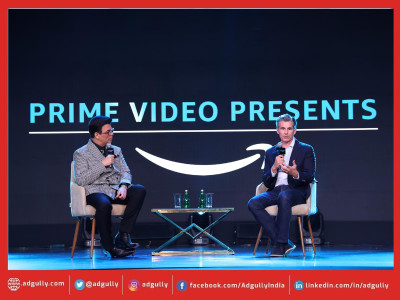Hugh Fletcher decodes the new dynamics of commerce
Commerce, simply put the business of buying and selling, affects all of us. More importantly, 2019 has been a year of awakening towards a new paradigm that is taking shape all around us. Old rules simply don’t work. Regardless of size and segment, players now need to be nimble and achieve ever faster speed to market. Brands are now expected to take an active stance on social issues, satisfy consumer demands for ultra-transparency and sustainability, and most importantly, have the courage to self disrupt their own identity in order to win over the new generations of customers. Economic expansion is happening across Asia, with 2019 being the year that India is taking the centre stage as its economy is predicted to grow 8 per cent a year between 2018 and 2022.
At a recent event in Mumbai, Hugh Fletcher, Head of Thought Leadership (EMEA) and UK Marketing at Wunderman Thompson Commerce, presented a study on the commerce scenario in the West and why e-commerce companies need to start planning about the future. The research was based on product research that Wunderman Thompson Commerce did, called ‘Future Shopper’ based on data from over 15,000 consumers who shop online across the US, UK, France, Germany, Spain, Czech Republic, Belgium and the Netherlands. The second research was called ‘Generation Alpha’, which seeks to understand the 6-16 year olds from the US and the UK. The study lets people know what the future customer will look like and how to plan ahead for the future.
Wunderman Thompson Commerce identified 4 key areas for this research:
- Social commerce influencing
- Amazon setting a benchmark
- Crack in Amazon’s armour and what Amazon cannot do
- Zero UI – thinking beyond the screen
Social commerce and Influencing
Fletcher noted that e-commerce players tend to think about what their competitor is doing and focus on one key area of the mix. He said, “We always tell our clients to think more broadly about the three keys areas – selling/ optimiding through marketplaces, selling/ optimising through retailers, and selling directly to the consumer. We are also talking about social commerce.”
The research revealed that 49 per cent of Generation Z gets their inspiration from social media, which shows the capacity of a captive audience there. The questions being asked by social platforms are how these inspirations can be turned into an actual sale? Backend functions of selling through the platform play a vital role here and that’s what platforms like Facebook, Instagram and Snapchat are delving into.
The study states that 28 per cent of the 6-16 year old are influenced by their friends, 25 per cent of this age group are influenced by online influencers and 21 per cent are influenced by their parents. Thus, more children are influenced by online influencers rather than their parents. Social media posts with product placement actually work. 6-16 year olds actually buy products that are posted by their favourite influencer.
Amazon setting the benchmark
As per the study, 38 per cent of all online sales in the UK are done through Amazon. In India, during the festive season 22 per cent of online sales are done by Amazon, while for Flipkart it is 63 per cent.
Here, the study focuses on how the younger generation is more conditioned and the awareness that they have about Amazon. They divided the Alpha Generation into – Maxi Alphas (13-16 year olds), Midi Alphas (10-12 year olds) and Mini Alphas (6-9 year olds). 90 per cent of Maxi Alphas, 88 per cent of Mini Alphas and 74 per cent of Midi Alphas are already aware about Amazon.
They also asked the alpha generation about the brands they know about. Amazon came at 8th, ahead of Nike and Apple. A trend is also seen that more product searches are done now on Amazon rather than on Google. Service is the key as fewer people today are making purchase decisions because of a particular brand.
The study further states that Amazon Prime is really affecting the way a customer are behaving. Prime changes perceptions. While 26 per cent non-Prime users think Amazon is best at price, 57 per cent of Prime users think the same way. For best delivery, 33 per cent of non-prime users think that is the case, while 69 per cent Prime users think the same. For returns, 22 per cent non-Prime users think Amazon is the best, while 54 per cent Prime users say the same. For customer service, too, it is 22 per cent non-Prime and 51 per cent Prime users agree that Amazon is the best. This makes it definite that being a Prime user makes you more positive about Amazon. 55 per cent of Prime users use more than 50 per cent of their online spends through Amazon.
As Amazon is slowly taking over everything, customers aren’t worried at all about buying from a single retailer. 62 per cent people are excited about having to shop only from one source like Amazon.
Cracks in Amazon’s armour and WACD
However, a person like a hardcore hobbiest would not buy something from Amazon, as despite having a huge range, Amazon does not specialise in a particular hobby. Experience of delivery is another aspect which needs to be improved, although they provide quick delivery. Reducing the waiting phase will make the experience more liked by customers. If the user experience is through stores, it still definitely attract customers, according to Fletcher. While 18 per cent said that Amazon provided with a wide range of products, 23 per cent said that the e-commerce player provides faster delivery options.
When it comes to Gen Z, most of them feel that Amazon doesn’t provide with the best experience when it came to brands they wanted. For Generation Alpha, ethics and morals are highly important. 18 per cent of the Generation Alpha will buy products that are more sustainable. 64 per cent will buy from brands that are doing good for the world.
Zero UI
Zero UI and Voice will change the user experience completely and also make a lot of changes from the backend perspective. Prime has the potential to make customers more brave to accept new technology. Customers who are Prime users are more open to making purchases through Voice and other technology. 51 per cent actually like to talk to Alexa. The current generation is completely used to it. This generation has this technology more as a part of their lives. It is easier for them to use their voice for daily activities. 22 per cent are open to using Alexa to make a purchase. Other technologies also include cashless ordering and automated re-ordering, which is pretty prevalent, especially amongst the younger generation. Facebook is trying to work with brain technology that will help consumers type just using brain waves. Nissan is looking at making cars safer by reducing the time between you think of making a break and you actually doing it.
















Share
Facebook
YouTube
Tweet
Twitter
LinkedIn